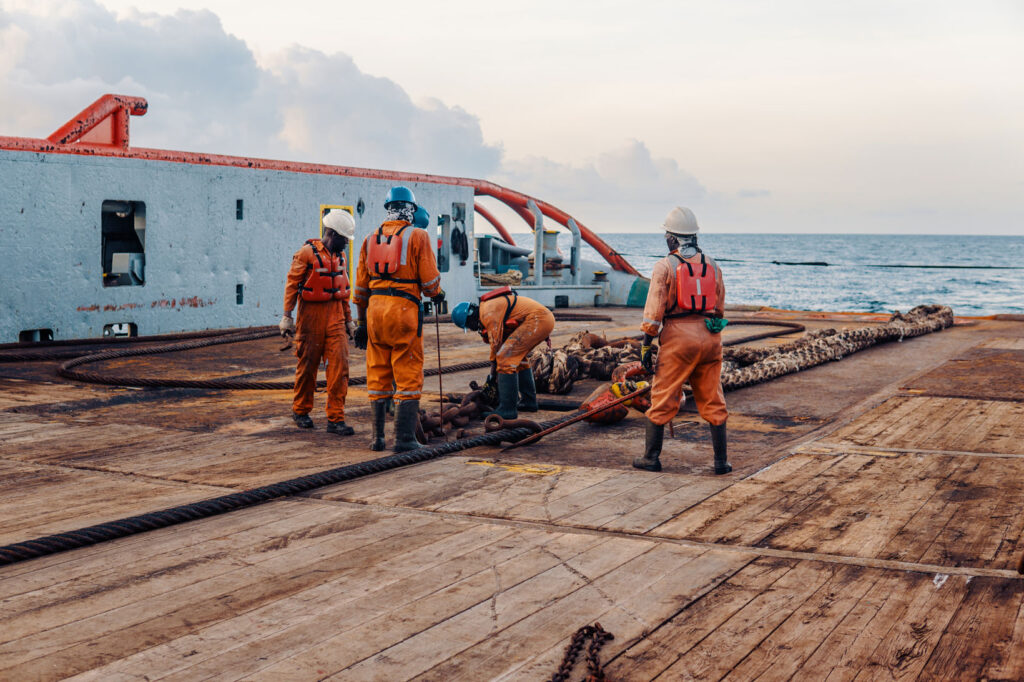
Data-driven decision making through predictive analytics has made a significant impact on nearly every industry over the last few years. It is not hard to imagine how using information extracted from a particular system might give valuable insights about that system. These insights are used to improve efficiency, reduce costs, and make dangerous jobs safer.
In the barge transport industry, vessel maintenance is one of the areas in which predictive analytics is most useful. While traditional maintenance systems have come a long way over the years, predictive maintenance systems are proving to be the future of maintenance by preventing equipment failures before they occur and keeping systems functioning more efficiently than ever.

Types of Vessel Maintenance
Developing an effective maintenance plan means integrating various types of maintenance into the schedule in an effort to keep both boats and barges functioning smoothly. This allows transport companies to stay in line with regulations and reduce equipment failures as much as possible. The four general categories of maintenance are:
Planned Maintenance: Maintenance which occurs at scheduled intervals and typically includes inspections, planned component replacements, and system overhauls.
Corrective Maintenance: Maintenance on failed equipment or components. Since equipment breakdowns often occur suddenly and at inopportune times, the goal is to prevent the need for corrective maintenance.
Preventive Maintenance: This is another form of scheduled maintenance, in which the crew performs certain preventative measures and inspections of the equipment and machinery. Typically, this includes activities like cleaning and lubricating components and coating maintenance.
Predictive Maintenance: This allows the crew to perform a proactive analysis of the ship’s equipment and machinery using sensors and monitoring systems. Data is used to determine when components will need corrective maintenance, allowing maintenance to be performed before problems occur.
The Delicate Balance of Maintenance and Cost Efficiency
The high cost of attaining a fleet is met with the high cost of extending its useful life. Though a barge or a boat might have an average lifespan of well over 20 years, maintenance costs start to pile up well before then.
On the other hand, thin margins experienced by barge transport companies require careful cost cutting whenever possible. Of course, safety and maintenance are crucial for the success of barge transportation, so any reduction in costs must be weighed carefully. For example, putting off maintenance on protective coatings to save a few dollars can lead to the more expensive problem of corrosion.
So the real question is: “How can we further reduce costs without incurring more costs in the future or sacrificing safety?”
Predictive Maintenance Vs. Preventive and Planned Maintenance
The goals of predictive maintenance, preventive maintenance, and planned maintenance are similar: They all seek to ensure proper boat and barge function and prevent the need for corrective maintenance. In an ideal world, corrective maintenance would not be needed.
The biggest difference between predictive maintenance and preventive or planned maintenance is that planned and preventive maintenance activities are performed according to a strict schedule, whether or not the equipment really needs the maintenance or not. This is a useful method for avoiding equipment failures and costly breakdowns that lead to downtime for the barge and higher costs for the barge company.
Predictive maintenance, on the other hand, leans on the ability for automated tools to learn about a particular component or system, like the engine, and how it functions on a regular basis—including how much wear-and-tear it incurs over time. This constant monitoring, via the system’s own data, enables the calculation of a more precise maintenance schedule. Ultimately, predictive maintenance provides a way to avoid both too much and too little maintenance on any given machinery or components. In turn, the barge company can avoid overspending on maintenance, while still avoiding accidents and equipment failures, and minimizing downtime.
The result of more efficient maintenance schedules allows barge companies to avoid unexpected repairs, which lead to costly emergency maintenance and delayed shipments. This careful monitoring of the ships systems also optimizes a barge’s useful lifetime.
Predictive Maintenance Systems and Components
While the potential of predictive maintenance systems is massive, the actual components are small, non-invasive, and fairly simple to integrate into a fleet. Predictive maintenance systems consist of two main components.
IoT Sensors
The acquisition of the data used in predictive maintenance requires a series of sensors to track the performance of equipment. These sensors are part of a network of interconnected devices which are monitored through software. The interconnections and their capabilities are referred to as an Internet-of-Things (IoT), which allows information to be sent to the computer without manually recording it.
Sensors used in barge machinery track a variety of parameters, like temperature or vibration, to detect potential mechanical issues, overheating, or cooling system failures.
Predictive Analytics Software
All data collected from the boat’s systems is automatically sent to the central predictive analytics software platform, which acts as a hub for data collection, analytics, and visualization. The predictive analytics platform can be accessed by barge operators to monitor equipment health and schedule maintenance activities, when needed. The predictive analytics software uses statistical analysis of available data to determine the most efficient maintenance schedules for the fleet and presents the findings in easy-to-use visualizations.

Setting the Stage for Predictive Maintenance
While predictive maintenance is the end-goal, there are several pieces of technology that need to be in place for it to work (see above). A first step is to move from spreadsheet-and-email methods of keeping records towards a more integrated digital system.
BargeOps is a great example. Our software can help streamline barge operations track important measures through our BargeOps Analytics module. BargeOps can help with onshore, liquids towing, VGP compliance, vessel management, crew scheduling, and so much more. Request a demo to see how our state-of-the-art software can help implement a predictive maintenance strategy for more efficient maintenance.


